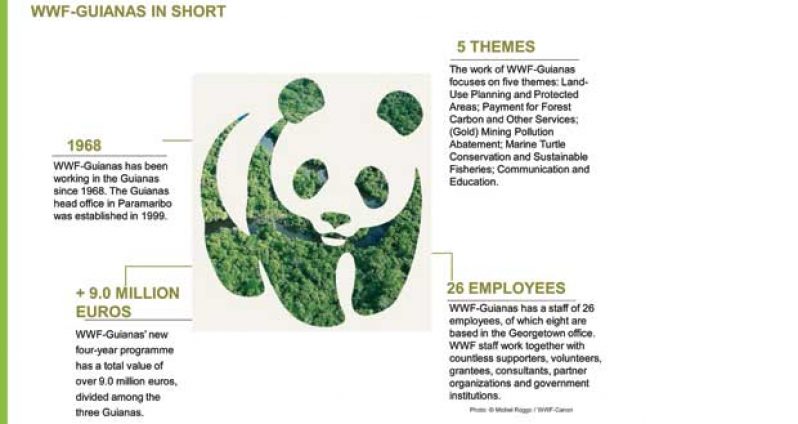Kaieteur National Park ecologically intact, healthy
–but in need of sustained protection
A STUDY on the biological diversity of the Kaieteur National Park (KNP) has found that the area is ecologically intact and healthy, but that its protection needs to be sustained, so that extremely rare species of flora and fauna found there are not forever lost due to depradations, such as illegal mining and inadequately managed eco-tourism.
The report stated in part thus: “Although Kaieteur Falls is in itself a spectacular geological feature, the combined biota of the Park represents a unique biogeographic Region of South America.”
“Several rare species appear to be endemic, possibly found nowhere else in the world, and therefore could easily vanish from earth.
This is sufficient reason in itself for the sustained protection of the KNP from possible depradations, on behalf of not only Guyana, in which this unique and fragile biospehere lies, but on behalf of the world,” the report said.
The report recommended an increase in the KNP boundaries, or the setting up of a contiguous protected landscape, such as the Guyana Highlands National Park, with World Heritage status.
The findings were released during presentations of two biodiversity assessments conducted in the Upper Potaro Region: One being a published report on diversity in the KNP, and the other a presentation on the preliminary findings of a Biodiversity Assessment Team (BAT) II.
The biological diversity report was based on the findings of an expedition by the World Wildlife Fund (WWF) in 2011.
The BAT II report was based on the findings of an expedition initiated and coordinated also by the WWF, in partnership with the Protected Areas Commission (PAC); Global Wildlife Conservation, a United States of America NGO; and Chenapau village, located upstream of the falls.
The BAT II survey team had comprised local and international scientists, students and Government institutions who used globally recognised and sound scientific methods to survey water quality; and taxonomic groups, including plants; large mammals; reptiles; amphibians; birds; fishes; ants; drag and damsel flies; aquatic beatles; and crustaceans (shrimps and crabs).
The venue for the launch of the findings was Moray House at Quamina Street in Georgetown.
Officials present included Minister of Natural Resources and the Environment (MNR&E), Robert Persaud; Regional Representative of WWF Guianas, Dominiek Plouvier; Reduced Emissions from Deforestation and Degradation (REDD+) Lead, Mr. Charles Hutchinson; Country Manager of WWF Guianas (Guyana), Dr. Patrick Williams; and Bio Diversity Officer, Ms. Aiesha Williams.
The gathering included officials of the Tourism and Hospitality Association of Guyana (THAG); staffers of the PAC; the MNR&E; Conservation International (CI), Iwokrama; the Guyana Forestry Commission (GFC); the Guyana Geology and Mines Commission (GGMC); the Guyana Tourism Authority (GTA); staff and students of the University of Guyana; and the United Nations Development Programme (UNDP).
Minister of Natural Reources and the Environment, Robert Persaud thanked WWF for the work leading to the reports, and said that the reports would help in improving management of Guyana’s biodiversity.
He said: “We consider these assessments important, as the information garnered helps us to guide Guyana’s land use planning; biodiversity conservation, and natural resources management priorities.”
He said that the reported integrity of the KNP eco system was good news.
Survey Member, Aiesha Williams said that, during the surveys, over 500 species were recorded, including some that are likely to be new to science, including some fishes, a tarantula spider, aquatic beatles, and dragon flies.
She stressed that the many extremely rare species of flora and fauna found in KNP represented a mere tip of the iceberg in terms of what may actually be there.
“The numbers do not indicate what is there; they indicate just what we found. There is every reason to believe that they represent merely the tip of the iceberg. There is need for additional surveys, because we don’t understand fully what is there, where they are, and what impact harvesting and other activity — such as mining – has on these kinds of animals.”
The final report of the BAT II team expedition is scheduled to be released in mid-2015.
(By Clifford Stanley)




.png)









